Fishing at Boone Lake, Tennessee
|
There are seven public boat ramps and eight marinas located around the reservoir. The 122-miles of shoreline are highly developed by private landowners and little public land is available. A large and excellent public fishing pier is located at the Devault Bridge near Winged Deer Park. This pier can be easily accessed by the disabled.
FISH HABITAT ENHANCEMENT: A variety of fish attractors have been constructed over the years to attract fish for anglers. These include brush piles which are used by many game fish, and stake beds that are primarily for concentrating crappie. Attractors work well, but must be refurbished occasionally to maintain their effectiveness. Benches designed to provide smallmouth spawning habitat have been placed in several areas. Many of these have recently been destroyed and used for firewood. Please contact one of your local wildlife officers if you see anyone destroying these or any other TWRA habitat structures. BLACK BASS: Largemouth and smallmouth bass are by far the most numerous and most sought after game fish in the reservoir. Although largemouth make up the greatest percentage of TWRA’s black bass samples, nearly equal numbers of both species are caught by anglers. The bass population is in excellent shape and the future continues to look good. The daily creel limit is five largemouth and/or smallmouth bass in any combination. As of April 24, 2009, there is a 15-inch minimum length limit on both largemouth and smallmouth bass. These regulations apply from the dam to Highway 11E Bridge at Bluff City on the South Fork Holston Arm and to the Austin Springs Bridge on the Watauga Arm. Spotted (Kentucky) bass rarely reach quality size in any East Tennessee reservoir and they compete with the more quality size smallmouth bass for habitat and food. They are occasionally found in Boone electrofishing surveys and anglers are encouraged to keep them for the table. There is no size restriction and the limit is 15 spotted bass per day. CATFISH: Blue Catfish Stocking: 1998 - 10,693; 1995 - 14,000; 1992 - 25,021 Since Boone has an abundant supply of forage species and good fertility, it can support the addition of quality game fish such as blue catfish. Blue cats can exceed 100 pounds and have been stocked on a limited basis since 1992. There are no harvest limits for catfish except that only one catfish over 34-inches may be harvested per day. There is a precautionary advisory against eating Boone's catfish and carp due to PCBs and chlordane. Children, pregnant women, and nursing mothers should not eat catfish or carp and other persons should limit their consumption to one meal per month. CRAPPIE: Blacknose/Black Crappie Stocking: 2012 - 48,979; 2011 - 47,258; 2009 - 48,482; 2008 - 29,140; 2007 - 27,558; 1998 - 69,994; 1997 - 83,587 Crappie fishing has improved recently. The creel limit put in place in the mid-90’s has allowed the crappie population to thrive. Black crappie are more abundant than whites. The daily creel limit is 15-fish with a minimum length limit of 10-inches. The TWRA has stocked more than 467,00 crappie into Boone since 1996 in an attempt to improve the fishery. TWRA's angler surveys have documented that very few blacknose black crappie are caught by anglers indicating this stocking program has had limited impact on the crappie population. STRIPED and CHEROKEE (HYBRID) BASS: Striped Bass Stocking: 2012 - 34,810; 2011 - 32,574; 2010 - 25,696; 2009 - 27,994; 2008 - 26,469; 2007 - 44,608; 2006 - 25,445 Hybrid Stocking: 2012 - 23,628; 2011 - 25,355; 2010 - 22,498; 2009 - 31,186; 2008 - 22,992; 2007 - 14,620; 2006 - 12,376 The TWRA has stocked striped and hybrid striped bass in Boone since 1972. They do not reproduce in the reservoir so the populations must be maintained by annual stocking. Anglers are allowed two hybrids or stripers per day in any combination from April through October with a 15-inch minimum length limit. Anglers are also allowed two fish in combination from November through March, but only one may be a striped bass and it must be at least 36-inches in length. FISHING TIPS: Largemouth bass - Spring: Spinner baits, buzz baits, worms, crankbaits, and float-n-fly work well in coves; Summer: Good night fishing on worms and lizards. Smallmouth bass - Spring: Fish with spinner baits, lizards, worms, live bait, small crankbaits, float-n-fly, and suspended flukes. During this period, secondary points and boulders are prime smallmouth holding spots. Summer: The smallmouth move to deeper water; the river channels are the best areas to fish. Fish at night with various worm rigs and pig-n-jigs. Crappie - Fish minnows or jigs around brush in the main channel or coves. Blue catfish - Summer: Fish the channel on either river arm with shad or bluegill. Striped and Cherokee bass - Spring: Use gizzard shad at 10-20 feet to the South Fork headwaters and to Point 19 on the Watauga Arm; Summer: Gizzard shad 10-20 feet deep and surface fishing with black-and-silver RedFin plugs above Davis Dock on the South Fork arm and above Devault Bridge on the Watauga arm; Fall: Same tactics as summer, but best on the South Fork Arm between Sportsman Dock and Rainbow Bridge; Winter: Fish gizzard shad on clay points at 20-30 feet. FISHING CONDITIONS SAFETY |

|
|
Quick Links Boone Lake News Boone Lake Photos Boone Lake Videos |

 Login
Login


